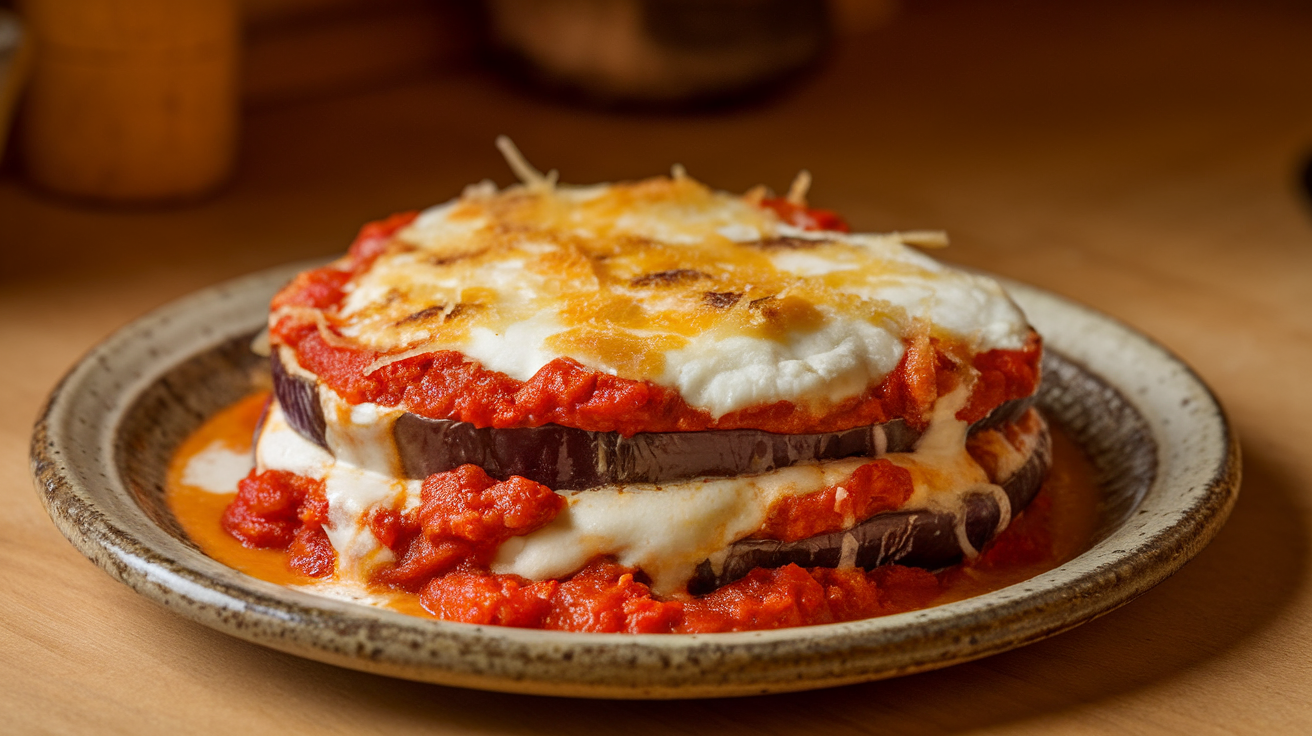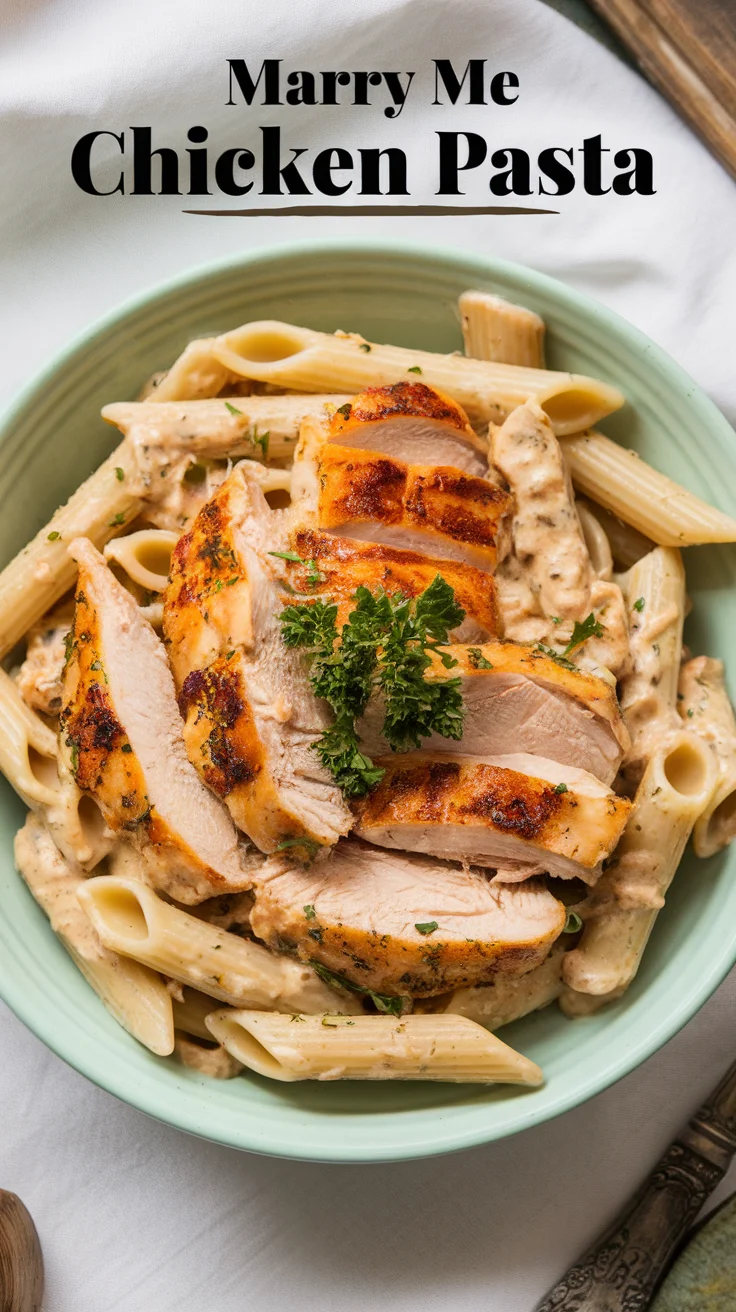When it comes to Italian comfort food, Layered Eggplant Parmesan—known as Melanzane Parmigiana in Italy—is a beloved classic cherished across generations. This rich, savory dish masterfully combines tender slices of eggplant with luscious tomato sauce, creamy mozzarella, and sharp Parmesan cheese, all baked to bubbling, golden perfection. Whether served as a hearty main course or alongside other Authentic Italian Side Dishes, this recipe is a shining example of traditional Italian home cooking at its finest.
This comprehensive guide will walk you through making the perfect Eggplant Parmigiana Recipe from scratch, offering tips on ingredient selection, preparation methods, and layering techniques that bring out the authentic flavors of this iconic dish. Additionally, you’ll discover historical background, nutritional insights, variations including the popular Best Chicken Parmigiana Recipe, and pairing ideas to create a full Italian feast.
The Origins of Parmigiana: A Slice of Italian Culinary History
The name Parmigiana refers to a method of layering ingredients with cheese, primarily Parmesan, but the roots of the dish are firmly planted in southern Italy, especially in the Campania region and Sicily. The exact origin is debated among food historians, but it is widely agreed that Melanzane alla Parmigiana evolved from rural peasant cooking where eggplant was abundant and easily preserved ingredients like cheese and tomatoes were staples.
In Sicily and Naples, families passed down this recipe from generation to generation, celebrating the bounty of summer eggplants, fresh tomatoes, and aromatic basil. The dish gained international acclaim with Italian immigrants who brought their culinary traditions overseas, inspiring many global variations.
The idea of layering and baking with cheese was later applied to other ingredients, giving birth to variants like Chicken Parmigiana—a breaded chicken cutlet smothered in sauce and cheese—now a staple in Italian-American cuisine.
Understanding the Components of the Best Traditional Parmigiana Recipe
The magic of Parmigiana lies in the harmonious blend of a few simple, fresh ingredients. Let’s break down each component that makes this dish irresistible:
Eggplant (Melanzane)
Eggplant is the star. The ideal eggplant for Parmigiana is firm and glossy, with a smooth skin and minimal seeds, which ensures tenderness without bitterness. Italian varieties like Violetta lunga or globe eggplants work well.
The key preparation is salting the slices to draw out bitterness and excess moisture. This step improves texture and prevents the dish from becoming watery.
Tomato Sauce
An authentic tomato sauce for Parmigiana is fresh, fragrant, and balanced. It is usually made with San Marzano tomatoes—prized for their natural sweetness and low acidity—simmered with garlic, olive oil, and fresh basil. The sauce should be thick enough to cling to the eggplant but not overpower it.
Queso
Parmigiana calls for layers of cheese that melt beautifully and offer a rich, savory contrast:
- Fresh Mozzarella: For creamy texture and mild flavor. Use whole-milk mozzarella for best results.
- Parmigiano-Reggiano: This hard, aged cheese adds sharpness and depth.
- Pecorino Romano (Optional): Some traditional recipes add Pecorino for a saltier, tangier note.
Albahaca Fresca
Basil provides a bright, herbal freshness that lifts the dish. Torn basil leaves layered between the eggplant and sauce infuse the Parmigiana with classic Italian aroma.
Olive Oil & Flour
Olive oil is used to fry the eggplant slices, infusing them with flavor and a golden crust. A light dusting of flour helps the slices crisp up without becoming greasy.
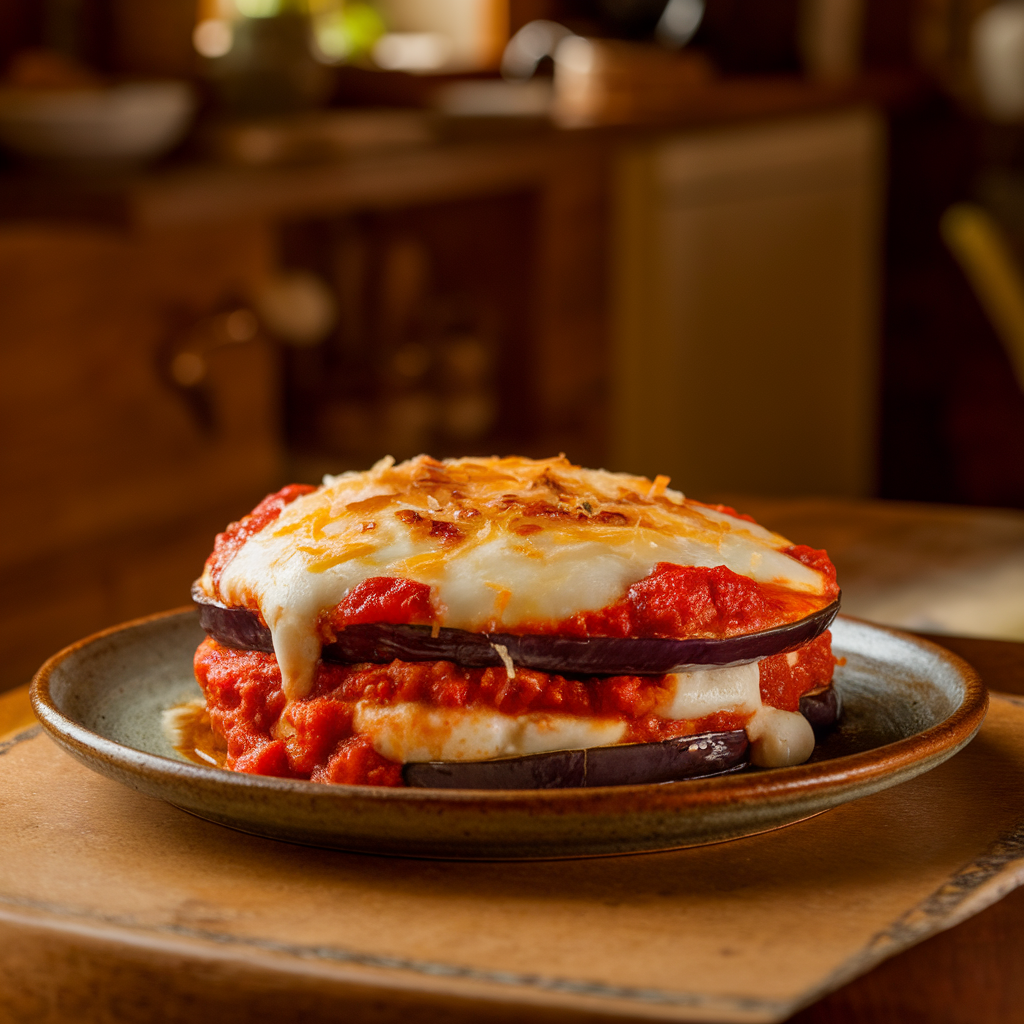
Step-by-Step Guide to the Traditional Layered Eggplant Parmesan
Here is a detailed, foolproof method to create authentic Eggplant Melanzane Recipe at home.
Step 1: Prepare the Eggplants
- Wash and slice eggplants into roughly 1/4 inch (6 mm) thick rounds.
- Lay the slices on a rack or in a colander and sprinkle generously with salt on both sides.
- Let them rest for 30-60 minutes. This draws out bitterness and moisture.
- Rinse the salt off under cold running water and pat dry completely using paper towels or a clean kitchen cloth.
Step 2: Fry or Bake the Eggplant
- Frying Method:
- Lightly coat each eggplant slice in flour, shaking off excess.
- Heat olive oil in a frying pan over medium heat.
- Fry slices in batches, about 2-3 minutes per side, until golden brown.
- Drain on paper towels to remove excess oil.
- Baking Method (Healthier Alternative):
- Preheat the oven to 400°F (200°C).
- Brush both sides of the slices with olive oil and place on a parchment-lined baking sheet.
- Bake for 20-25 minutes, flipping halfway, until golden and tender.
Step 3: Prepare the Tomato Sauce
- In a saucepan, warm 2 tablespoons of olive oil over medium heat.
- Add 2-3 minced garlic cloves and sauté until fragrant (about 1 minute).
- Add 28 oz (800 g) of canned San Marzano tomatoes or fresh peeled tomatoes crushed by hand.
- Season with salt, pepper, and a pinch of sugar if tomatoes are too acidic.
- Simmer uncovered for 20-30 minutes until the sauce thickens.
- Stir in torn fresh basil leaves at the end for aroma.
Step 4: Assemble the Parmigiana
- Spread a thin layer of tomato sauce on the bottom of a 9×13 inch (23×33 cm) baking dish.
- Arrange a layer of fried/baked eggplant slices over the sauce.
- Spoon more tomato sauce on the eggplant layer.
- Distribute slices or shreds of fresh mozzarella evenly.
- Sprinkle a generous handful of grated Parmesan cheese.
- Repeat layering until all ingredients are used, finishing with a layer of sauce and a good amount of Parmesan on top.
Step 5: Bake to Perfection
- Cover the baking dish with foil to prevent excessive browning.
- Bake in a preheated oven at 375°F (190°C) for 30 minutes.
- Remove the foil and bake for another 10-15 minutes to brown and bubble the cheese.
- For extra crispiness, you can broil for 2-3 minutes at the end—watch carefully to avoid burning.
Paso 6: Descansar y Servir
Remove from oven and allow to rest for 10-15 minutes. This step helps the Parmigiana set, making it easier to slice and serve.
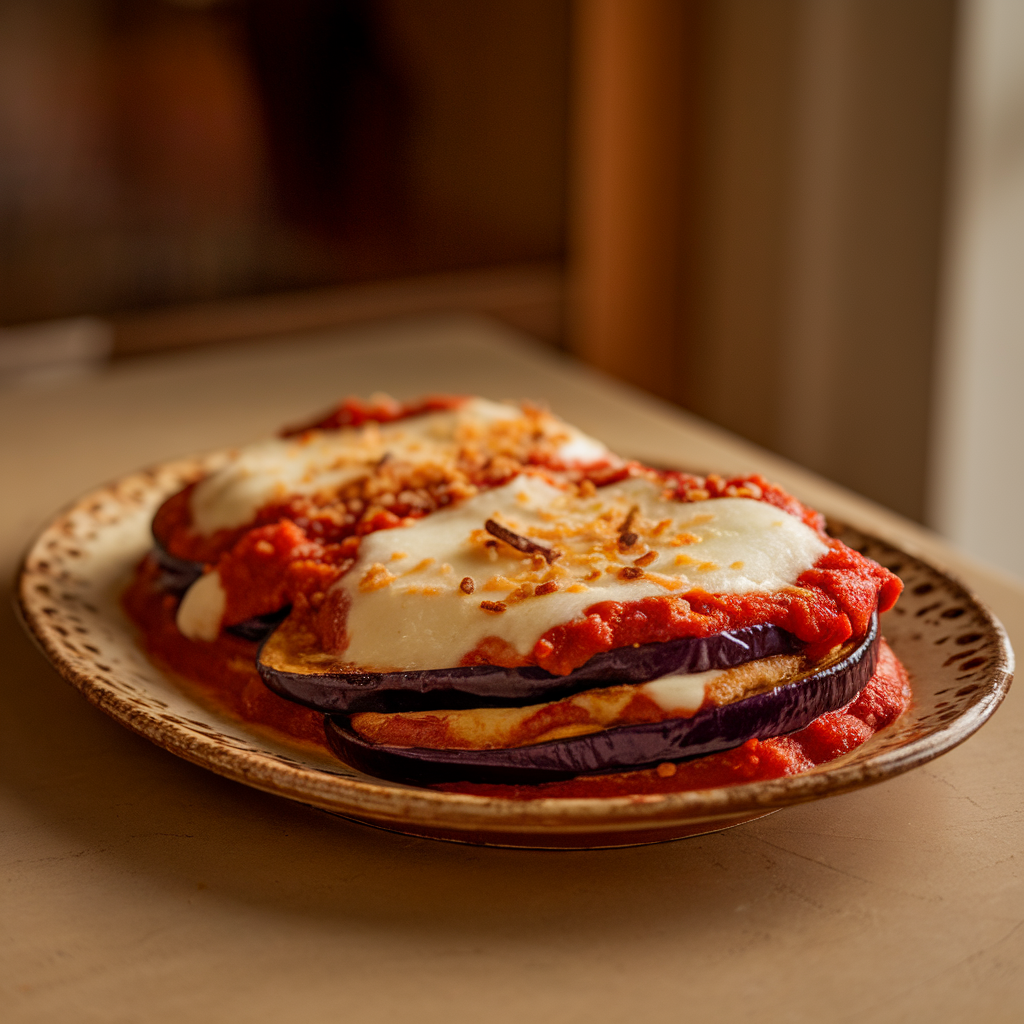
Cooking Tips for the Perfect Eggplant Parmigiana
- Salting Eggplant: This traditional step cannot be skipped if you want to avoid bitterness and sogginess.
- Oil Temperature: For frying, maintain medium heat to get a crispy crust without absorbing too much oil.
- Cheese Balance: Don’t overload on mozzarella, or the dish can become too watery.
- Sauce Consistency: Simmer the tomato sauce until thick but still vibrant; watery sauce dilutes flavor.
- Layer Evenly: Thin, even layers cook more uniformly and meld flavors better.
- Resting Time: Letting the dish rest helps it firm up, making serving cleaner and easier.
Nutritional and Health Benefits of Eggplant Parmigiana
Despite its richness, Italian Eggplant Recipes like Parmigiana can be part of a balanced diet when prepared mindfully.
- Eggplant is low in calories and high in fiber, promoting digestion and satiety.
- It contains powerful antioxidants like nasunin, which help protect cells from oxidative damage.
- The use of fresh tomatoes adds vitamin C and lycopene, which have anti-inflammatory benefits.
- Baking instead of frying can reduce calorie and fat content significantly.
- Using moderate amounts of quality cheese provides calcium and protein.
Variations of Parmigiana: Beyond the Traditional Eggplant
Parmigiana has inspired many delicious adaptations worldwide:
1. Best Chicken Parmigiana Recipe
Breaded chicken cutlets replace eggplant, topped with tomato sauce and cheese. This Italian-American favorite is usually served with pasta or salad. It adds protein and makes the dish heartier.
2. Zucchini or Other Vegetable Parmigiana
Thin slices of zucchini, mushrooms, or even cauliflower can substitute eggplant for seasonal variation or dietary needs.
3. Vegan Parmigiana
Replace dairy cheeses with cashew-based or almond-based vegan cheeses, and bake eggplant instead of frying. Use nutritional yeast for a cheesy flavor.
4. Seafood Parmigiana
In coastal Italy, versions with seafood such as shrimp or fish layered with sauce exist, highlighting regional diversity.
Pairing Ideas: Authentic Italian Side Dishes to Complement Parmigiana
To create a complete Italian meal experience, serve your Parmigiana alongside these traditional sides:
- Caprese Salad: Fresh slices of tomato, mozzarella, basil, olive oil, and balsamic vinegar.
- Garlic Bread or Bruschetta: Toasted bread with garlic, olive oil, and tomato topping.
- Insalata Verde (Green Salad): Simple mixed greens with lemon vinaigrette.
- Risotto: Creamy mushroom or saffron risotto adds luxury.
- Roasted or Grilled Vegetables: Seasonal veggies drizzled with olive oil and herbs.
- Polenta: Soft or grilled polenta is a comforting starch side.
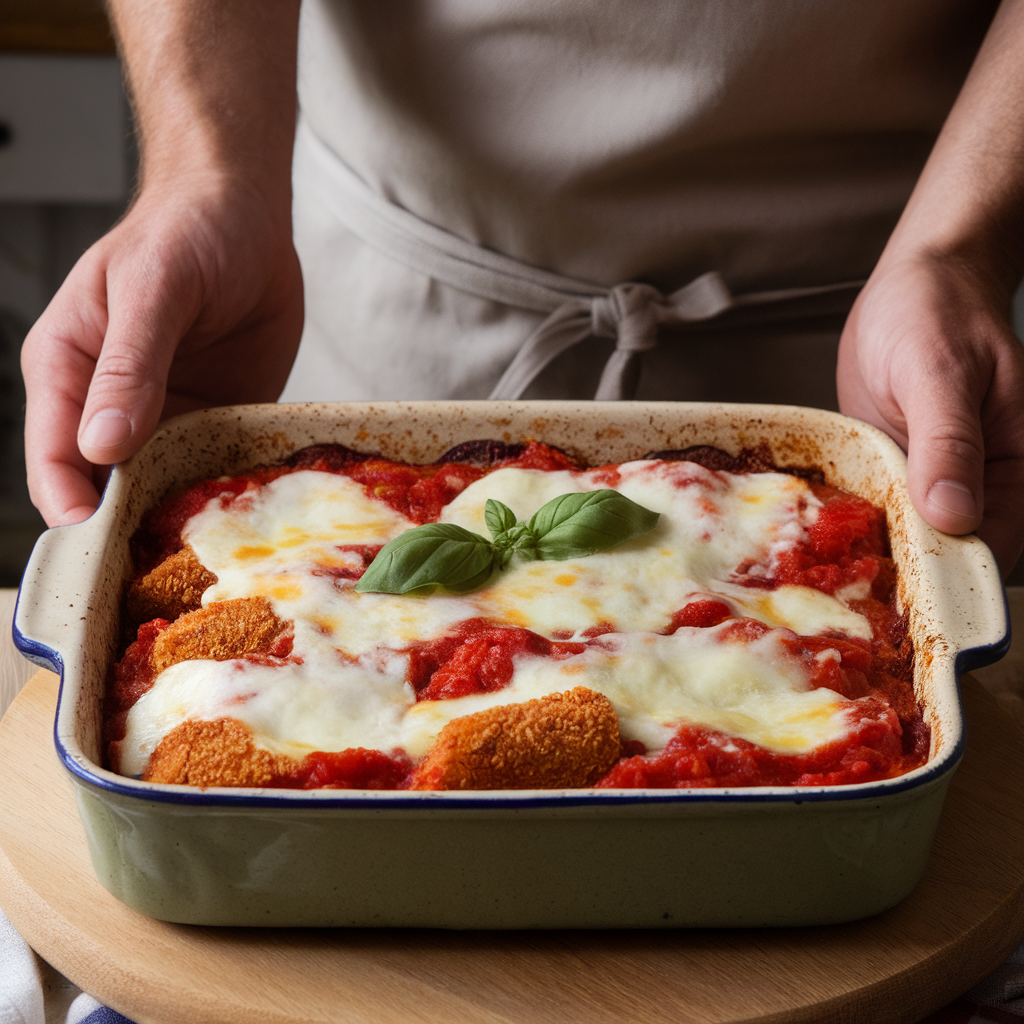
Wine Pairings for Eggplant Parmigiana
A well-chosen wine elevates the dining experience:
- Chianti Classico: This medium-bodied red has enough acidity to match the tomato sauce.
- Sangiovese: Bright, cherry notes complement eggplant and cheese.
- Barbera: Its fruity acidity pairs beautifully.
- For white wine lovers, a crisp Verdicchio o Vermentino offers a fresh counterbalance.
Frequently Asked Questions About Eggplant Parmigiana
Q: Can I make Parmigiana ahead and reheat it?
Yes! It tastes even better after resting overnight as flavors meld. Reheat gently in the oven to maintain texture.
Q: Is frying necessary?
No. Baking eggplant slices is healthier and still yields great flavor, especially if brushed with olive oil.
Q: How to prevent soggy Parmigiana?
Salting eggplant to remove moisture, cooking sauce thickly, and not overloading with cheese helps keep it firm.
Q: Can I freeze this dish?
Absolutely. Freeze before baking and cook from frozen, adding extra baking time.
Final Thoughts: Why You Should Make Traditional Parmigiana Today
The traditional Melanzane Parmigiana Recipe is more than a dish—it’s a celebration of Italian culture and culinary heritage. Its layers of flavor, from the creamy mozzarella to the rich tomato and tender eggplant, provide comfort and joy in every bite.
Whether you serve it as part of a festive meal or a cozy family dinner, mastering this recipe connects you with centuries of Italian tradition. It also showcases how simple, fresh ingredients combined with care and love can create unforgettable food.
If you want to explore further, try the Best Chicken Parmigiana Recipe or experiment with vegetables like zucchini to adapt this classic to your taste.
